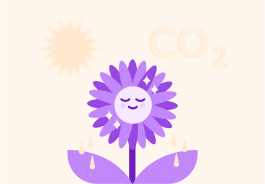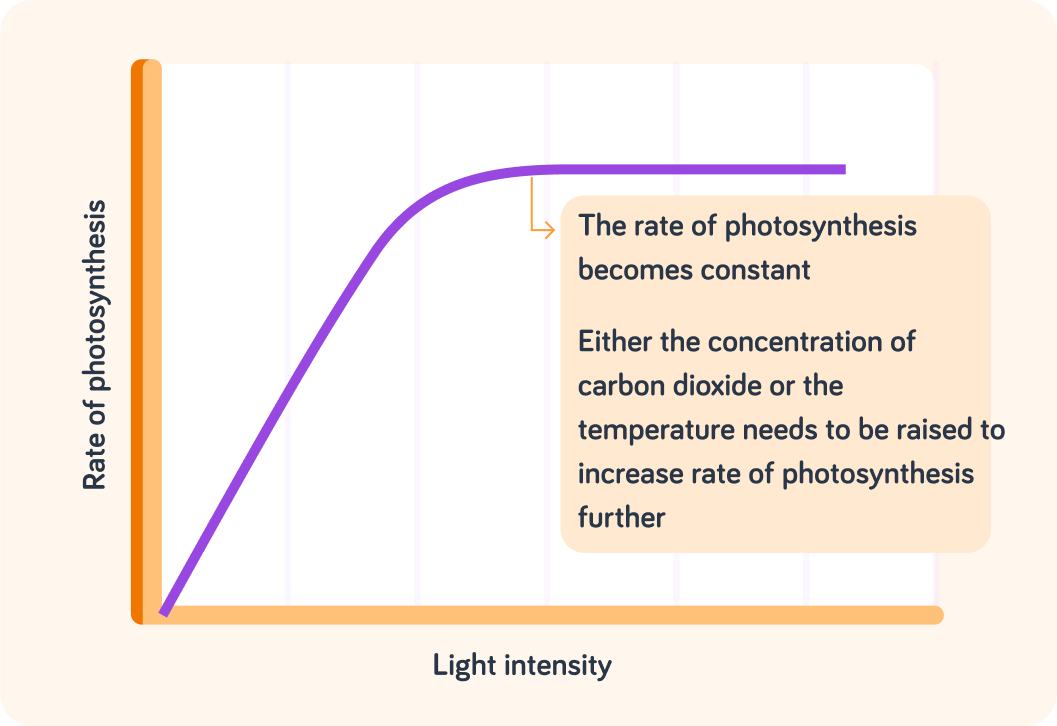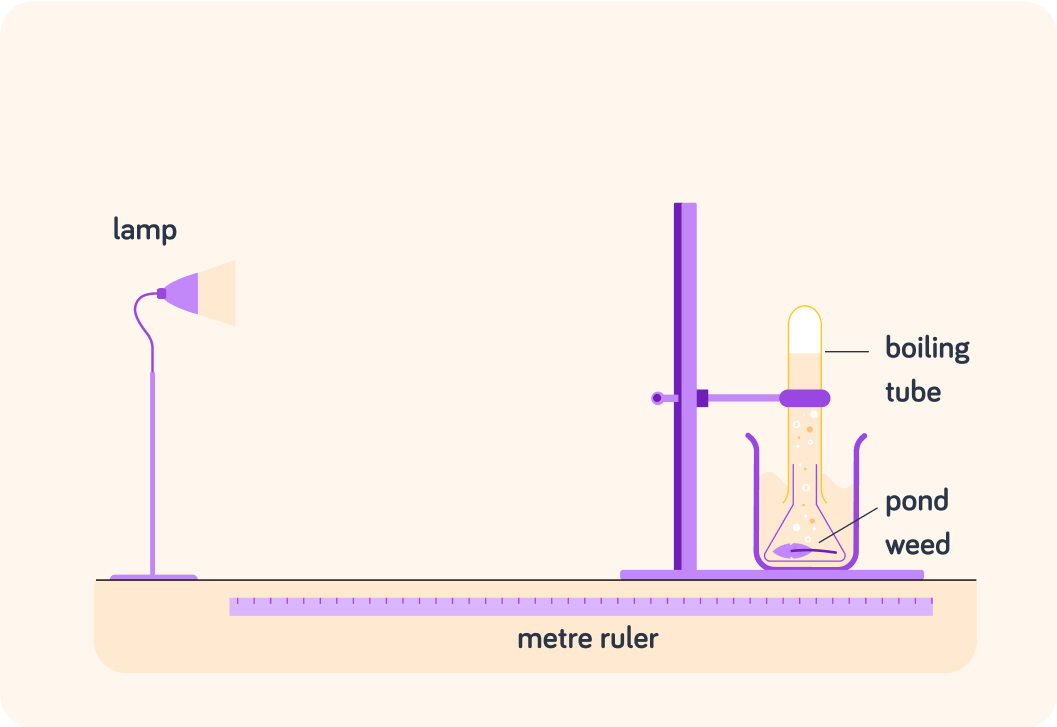YOU ARE LEARNING:
Photosynthesis and Light Intensity

Photosynthesis and Light Intensity
Rate of photosynthesis is dependent on light intensity and the distance from a light source.
State the form of energy required for photosynthesis to take place.

Dim light slows down the rate of photosynthesis and brighter light speeds it up. What is the name of this factor that refers to the brightness of light?

What do we call a factor that prevents a reaction from going faster?

Have a look at this graph
As the light intensity increased initially, the rate of photosynthesis also increased. At this point, light intensity was the limiting factor.

Initially as the light intensity increased, the rate of photosynthesis increased. What is this kind of relationship called?


Later when the graph levels out, a different factor became limiting. Increasing the light intensity didn't then have an effect. We say that the rate of photosynthesis has _________


Imagine you are standing 3 metres from a lamp, and then you move so you are 6 metres away from it. What happens to how bright the light feels?

If we want to work out the increase in light intensity if a light is moved 3 times further away, we work it out like this: First we say 32=9. But when we move a light further away, the light intensity doesn't get 9 times bigger. It gets 9 times smaller! So we then inverse the result like this 91. What is the correct formula that generalises this example?

Now, can you work out the light intensity when the light is moved 4 times further away?

This inverse square law d21 describes how light intensity decreases when the distance d **** to the light source increases. Moving twice as far from the light, results in a quarter of the brightness.
If we multiply the distance from the light by 2, the brightness is 41. If we multiply the distance from the light by 10, the brightness is 1001 .
What is the light intensity when the light is nine times as far away?

This is an example of an experiment. First we need to set it up.
We place pondweed in a beaker and shine a light on it from a distance that we record at for example 10cm

Then we take measurements.
We count the number of bubbles produced by the pondweed over 1 minute.

Now, we repeat at different distances.
At 20cm, 30cm, 40cm and 50cm (so we have 5 distances in total).

Finally, we repeat the whole experiment.
We repeat the experiment at each distance so that we can calculate a mean average.

What was the independent variable in this experiment? In other words, what was changed **** in this experiment?

What was the dependent variable in this experiment? In other words, what was measured **** in this experiment?

In this experiment, we are only interested in the effect that the light intensity has on the number of oxygen bubbles per minute. So what other factors should we make sure are kept the same? We call these control variables.

You can select multiple answers
